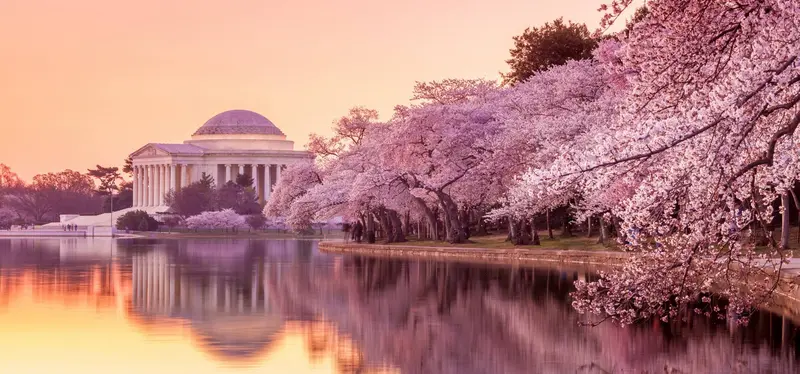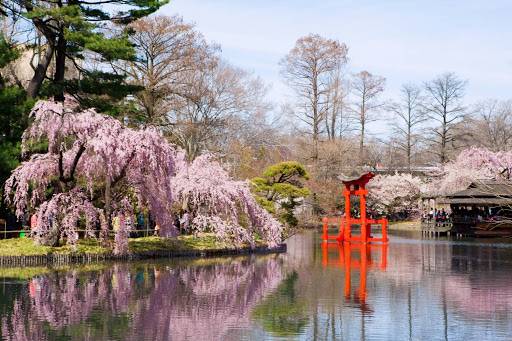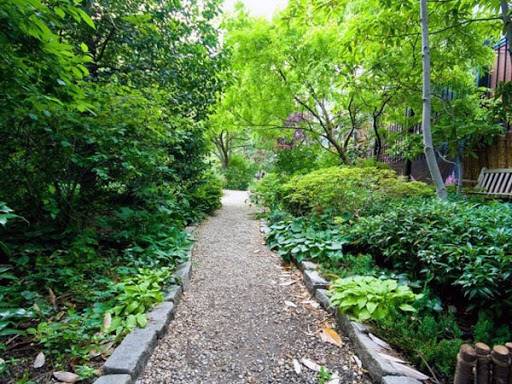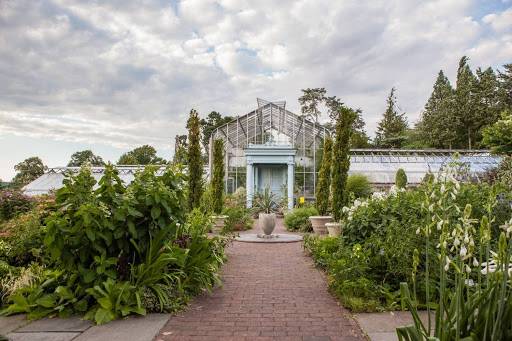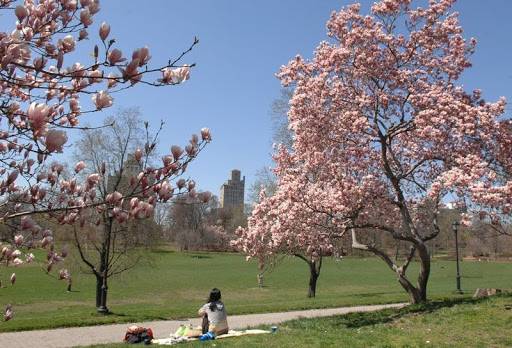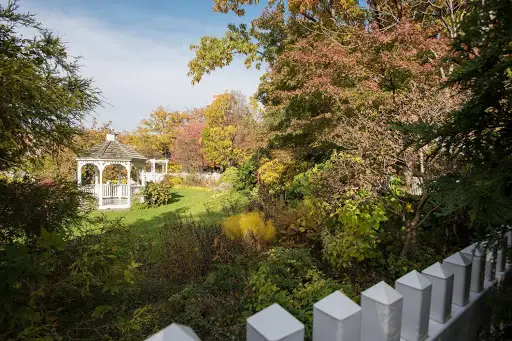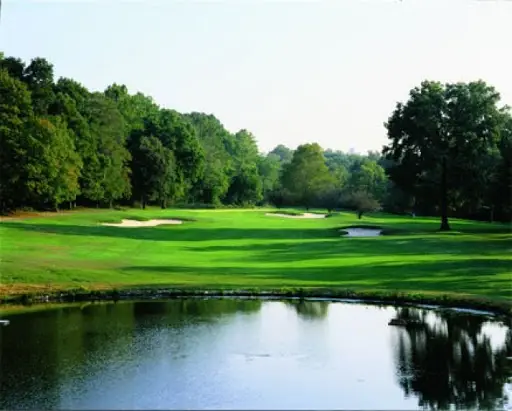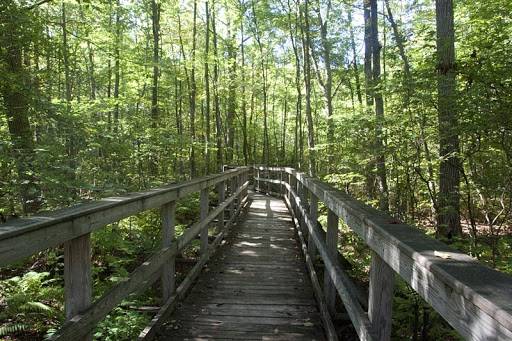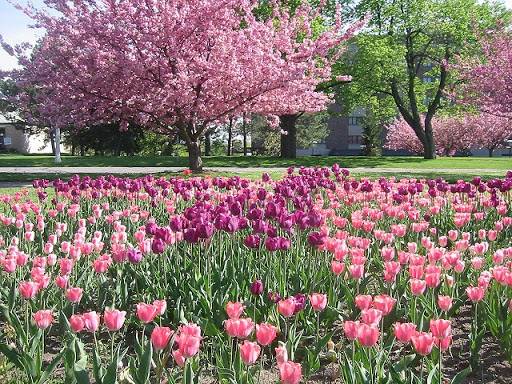The Native Plant Garden at the New York Botanical Garden features nearly 100,000 native wildflowers, trees, ferns, and grasses from New York. This diverse plant collection is designed so that there are seasonal plants to view in every season.
The Brooklyn Botanic Garden is perhaps best known for its cherry blossom season. Every year, on weekends in late April, the highway from New York to Washington gets jammed for several weeks as people flock to the capital to admire the cherry blossoms. For those who want to see cherry blossoms without the hassle, the best choice is the Brooklyn Botanic Garden! Additionally, the garden periodically hosts various plant and gardening-related events. It's a great place to stroll around, take photos, and have a picnic on weekends!
The Liz Christy Bowery Houston Garden
There are also many wildflower habitats on Manhattan Island, and the Liz Christy Bowery Houston Garden located in Downtown is home to New York's native wildflower representative - the bleeding heart. This flower is commonly found at the base of lush trees, and its folk name, Dutchman's breeches, comes from its appearance. In addition, during this period, you can see early-blooming Virginia bluebells, trilliums, mayapples, rhododendrons, ferns, and other species commonly found in the northeastern United States.
Wave Hill Public Gardens
The 20-acre Wave Hill estate offers a full view of the Hudson River and the New Jersey Palisades. It features two historic European-style mansions, gardens, and greenhouses. April is the most beautiful season at Wave Hill, with flowers in the garden blooming in full splendor, new grass sprouting on the lawns, and gentle spring breezes carrying the fragrance of flowers and grass from the Hudson River, creating a truly delightful experience.
Native Woodland Garden at NYU
The Native Woodland Garden is a gift from the NYU class of 2008, covering an area of approximately 2,200 square feet. At its inception, native species that grew in Manhattan before the invasion of foreign species 400 years ago were specially selected, including hornbeam grass, willow, sedge, broadleaf herbaceous plants, and more. The entire garden is also designed to resemble the classic Manhattan woodland of that era.
Central Park, the top natural attraction on Manhattan Island, covers 843 acres and has multiple flower viewing areas. Among them, the annual cherry blossom viewing area that goes viral on social media is Cherry Hill, which can be seen from the entrance at 72nd Street on the west side. To see native species, such as the pink bleeding heart, you can go to Turtle Pond, located between 79th and 80th Streets in the central part of the park. The park's iconic Conservatory Garden, located at East 104th Street, is planted with hawthorn trees. During this season, you can also find large patches of white oleander near the pond at 100th Street, along with other flower species worth stopping to admire.
Built on a section of abandoned railway, High Line Park is now adorned with a chic and artistic vibe. Its riverside location makes it an ideal spot to watch the sunset. In spring, the colors here are the most vibrant. Along this narrow park, you can see ornamental alliums (a type of purple, large, ball-shaped allium), camassia, licorice, purple geraniums, and other varieties of wildflowers.
There are actually quite a few good places to enjoy cherry blossoms in the New York area, and Prospect Park is one of them. With over 200 cherry trees of 42 different varieties, the blooming period is relatively long, lasting until mid-May. Prospect Park is a park with a very artistic atmosphere. The layout and environment of the park give a sense of tranquility and elegance. During the cherry blossom season, the Japanese-style garden designed by a Japanese landscape architect along the Cherry Blossom Avenue complements the cherry blossoms perfectly, creating a harmonious and captivating scene that makes visitors reluctant to leave.
Queens Botanical Garden
The 39-acre Queens Botanical Garden boasts a well-maintained ecosystem with various plant species thriving throughout the year. Its unique bee garden sets it apart from other parks. In spring, besides the famous roses, other must-see flowers include columbine, red bleeding heart, lily of the valley, lilac, and redbud. These colorful flowers are not planted in separate areas but are interspersed throughout the entire park.
Van Cortlandt Park
In the North Woods of Van Cortlandt Park, and along the route from John Trail to Croton Woods and back via Putnam Trail, the area is adorned with flourishing wildflowers. This season, we can also see birds migrating here in the spring. Based on past records, the expected wildflower species include bloodroot, trout lily, bleeding heart, scented geranium, lily of the valley, columbine, field mustard, and more.
Great Swamp National Wildlife Refuge Wilderness
Located in New Jersey, the Great Swamp National Wildlife Refuge is just an hour's drive from New York City. As a wildlife sanctuary, visitors often see beautiful wildlife and experience the ecological harmony here, especially in spring when the area is full of vitality. Additionally, over 700 species of plants grow here, with various wildflowers blooming from March to October, spanning three seasons. In spring, you can see species such as lotus, trillium, seven-petaled lotus, iris, and geranium in full bloom.
Every early May, Albany, the capital of New York State, is adorned with tulips, turning it into a sea of flowers. According to statistics, during this period in previous years, there were more than 100,000 blooming tulips of over 150 varieties. The simple shape and vibrant colors of tulips always make them pleasing to the eye. The most famous tulip viewing might be in Seattle, but the tulip sea embedded in the city of Albany has its own unique charm. On Mother's Day weekend, the city also hosts a Tulip Festival, featuring musical performances, dances, and the coronation of the Tulip Queen.
Rochester
Rochester, known as the 'Flower City', is also an artistic music capital. Every year in early May, this quiet small town welcomes a ten-day carnival, with performances and exhibitions taking place in every corner. The main event of this 'Lilac Festival' is naturally the blooming of over a thousand lilac bushes.
